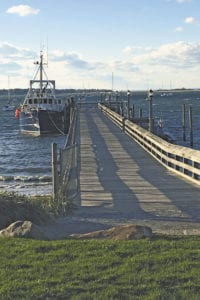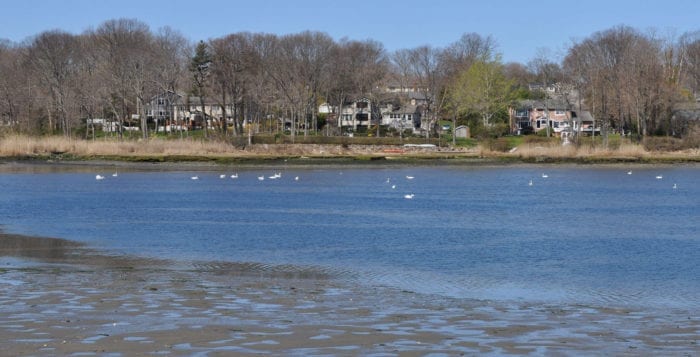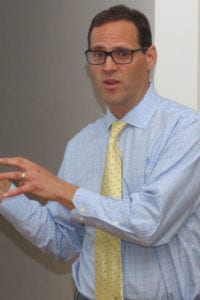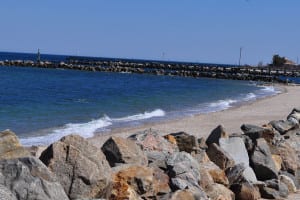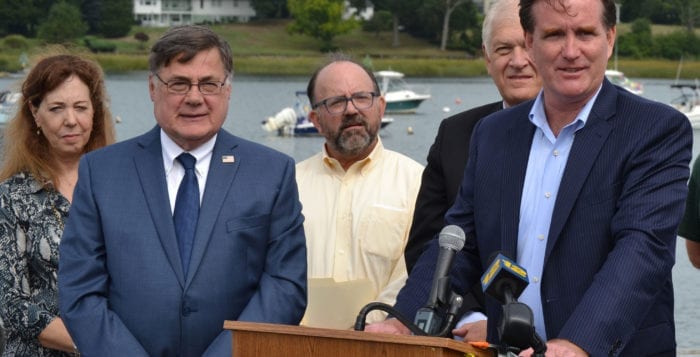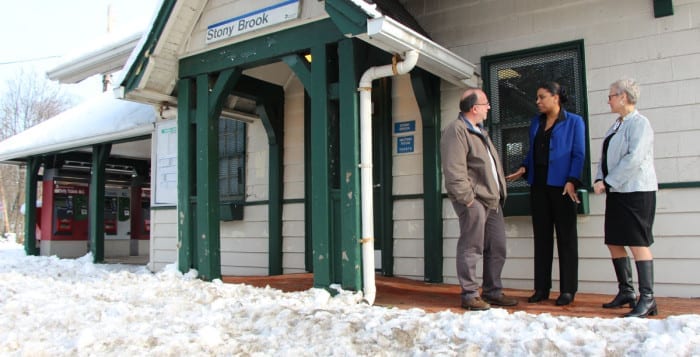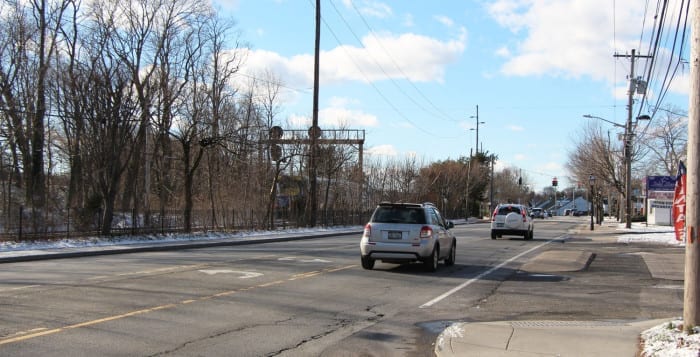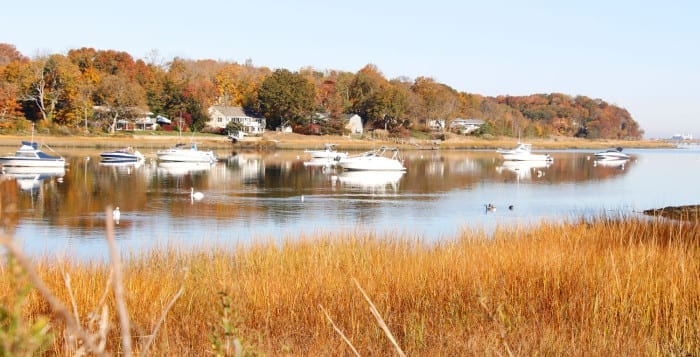Route 25A in the Three Village area is one step closer to getting a makeover thanks to the collaborative efforts of residents, business owners, civic leaders and local lawmakers.
Brookhaven Town Supervisor Ed Romaine (R) and Councilwoman Valerie Cartright (D-Port Jefferson Station) held a press conference at The Stony Brook School Oct. 24 to announce the completion of the Route 25A Three Village Area Visioning Report. The town board is expected to vote unanimously for the report at the Oct. 26 town board meeting. The next step for changes in the area will be land use studies followed by public hearings.
“The visioning document that we’re going to be putting forward at the town board meeting on Thursday offers thoughts and ideas for improving traffic and pedestrian safety, creating and maintaining a more cohesive architecture and visual aesthetic while enhancing the existing public open spaces,” Cartwright said. “It is this type of community-based planning that we need to continue to do, and it is that work product that will be presented on Thursday, and I’m proud to be the sponsor of that resolution.”
In 2016, Romaine and Cartright co-sponsored a land use resolution which led to the Brookhaven Town Department of Planning, Environment and Land Management authorizing the creation of a land use study and plan regarding the state highway.
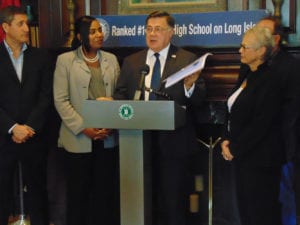
“This report is step one but it’s an important step,” Romaine said. “It lays out the future of the 25A corridor. From this step will come land use decisions that will be put before the entire town board regarding the future of 25A, and this could not have happened without the hard work of Councilwoman Valerie Cartright and the hard work of the citizens who participated starting with the two co-chairpersons Jane Taylor and George Hoffman.”
In addition to being co-chairs of the Citizens Advisory Committee, Hoffman is vice president of the Three Village Civic Association and Taylor is assistant head of The Stony Brook School. Romaine and Cartright also thanked the representatives from local community groups who attended the press conference and were involved in the visioning process.
The supervisor and councilwoman also thanked The Stony Brook School where community forums were held. The meetings gave residents and business owners the opportunity to discuss improvements they would like to see along the corridor from the Smithtown/Brookhaven town line to the Poquott Village line. Listening to constituents’ concerns about the area is something Cartright said she has done since she took office, and she is optimistic about the future of 25A in the Three Village area, where she said residents love the historic, main street feeling and charm.
Hoffman said after a shaky start in 2013 the councilwoman was “influential and instrumental in kind of jump starting the planning process for Route 25A again.”
Romaine asked the co-chairs to present the report at the Oct. 26 meeting. Taylor said she was pleased with the results of the report that will provide the town board with a “road map” for future planning along the state road.

“I was absolutely overwhelmed, when we began this process, about the excitement of being able to vision ahead maybe 20 or 30 years, when many of us won’t be here anymore, and the participation of the committee members to make that happen and to share their thoughts,” Taylor said. “And, sometimes we had varying opinions but we would all come together and the purpose was the vision of what we want to see for our community.”
President of the Three Village Civic Association Jonathan Kornreich was in attendance at the press conference. He said like many group leaders and residents he appreciated the opportunity to contribute ideas at the meetings.
“Planning for the future of the community is one of the primary goals of the civic association and it’s really our main focus,” he said. “I’m very appreciative of the work that Jane and George did, and I am especially appreciative for the leadership of Valerie and Ed.”
Romaine put the lengthy 25A visioning process into perspective.
“Society grows great when old men plant trees,” Romaine said, quoting an ancient Greek proverb. “We planted some trees here, and not all of us may see it to fruition, but this is something that speaks to the quality of this community and the people that live in it and the desire to ensure that this community remains, not unchanged, but the same type of a community that it is now 20 or 30 years from now.”
Residents will be able to review the report on the town’s website after it is presented at www.brookhavenny.gov.






